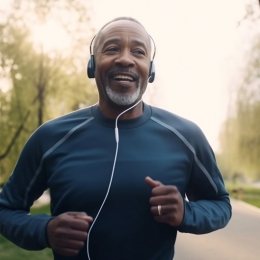7 reasons to strengthen your muscles
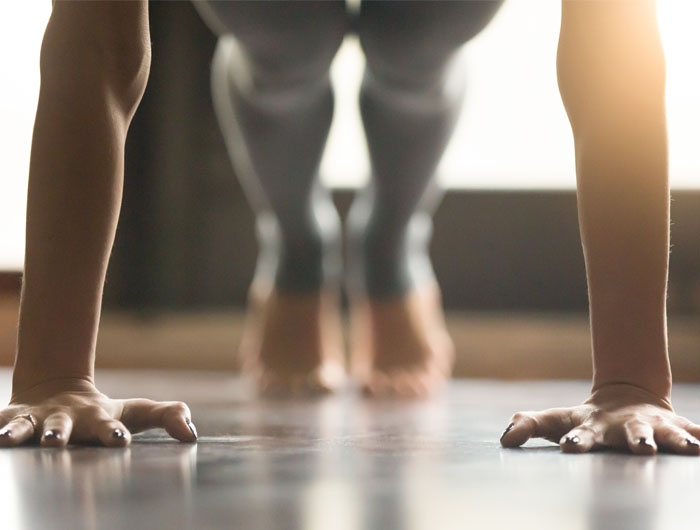
fizkes - stock.adobe.com.
It’s no secret that moving your body helps keep it healthy. But if you’re like most people, you walk right by the dumbbells as you head to the treadmill at the gym. In fact, evidence is mounting that muscles are more than just for show. Here’s why it’s time to add some push-ups, planks, and squats to your fitness routine.
1. Your muscles ain’t what they were in your 20s.
“There’s a use-it-or-lose-it principle with muscles,” says Brad Schoenfeld, professor of exercise science at Lehman College in New York.
That’s true at any age, but the process speeds up as the years go by.
“There’s an age-related loss of muscle mass that occurs at about a half percent per year starting in our thirties,” Schoenfeld explains. “Then it accelerates once you get into your fifties.”
“By the time you’re 70, you may have lost 40 percent, if not more, of your muscle mass,” says Gary Hunter, professor emeritus in the department of nutrition sciences at the University of Alabama at Birmingham.
And it’s not just muscle mass.
“The composition of the muscle looks dramatically different in an older versus a younger person,” notes Mark Peterson, associate professor of physical medicine and rehabilitation at the University of Michigan.
“The muscle fibers get smaller, the muscle is less able to contract, and it gets infiltrated with fat.”
The bad news: You’ll lose some muscle even if you’ve been training all your life. The better news: “You can build appreciable muscle at any age,” says Schoenfeld. “A 70-year-old who strength trains seriously can have more muscle than their 20-year-old sedentary self.”
2. Muscle strength is not the same as muscle size.
Even more critical than the loss of muscle with age is the loss of strength.
“Muscle size and strength are obviously highly correlated,” says Peterson. “Muscle strength is dependent on the size of the muscle, but also on how the nervous system interacts with the muscle.”
Strength training boosts both.
Interestingly, “the strength adaptations that take place in the first couple of months of strength training are primarily neuromuscular,” Peterson explains.
That’s why you may notice yourself getting stronger—even if your muscles don’t look bigger—when you first start.
“When you don’t use your muscles, they become weaker, both from a nervous system standpoint and at the muscle level,” says Peterson. “But the loss of muscle happens much more slowly than the nervous system deconditioning.”
That’s why people lose strength two to five times faster than they lose muscle mass as they age.
3. Strength can keep you self-sufficient.
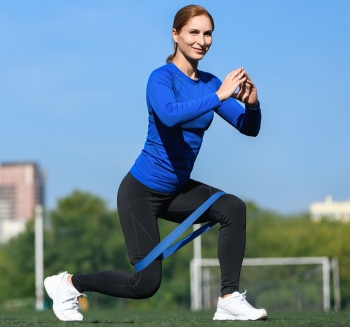
“If you don’t preserve strength, it’s harder for you to ambulate—to move your body through space—or to walk up stairs or stand up from a chair,” says Peterson.
“The beauty of doing strength training is that it improves balance and gait and your ability to squat down and pick up a box from Amazon. You’re not going to get that from doing repetitive aerobic exercise like walking or biking.”
“I don’t want to oversell strength training over aerobic,” Peterson adds. “Aerobic exercise is critical for cardiovascular and cognitive health. I’m a firm believer in daily aerobic exercise. But it shouldn’t come at the cost of strength training.”
What’s more, strength training can make gardening, cleaning the house, walking the dog, or riding a bike easier.
“In our studies in which we have older people do strength training,” says Hunter, “we find that not only do strength and muscle mass increase, but people also increase their participation in physical activity.”
And that leads to other benefits.
“You become more economical at movement,” says Hunter. “As you move more, you’ll have a lower heart rate and breathe easier, and that translates into more ease and enjoyment of activity. So strength training has several impacts on your likelihood of being active.”
4. Strength can help prevent falls.
“Strength training can help people avoid falls and fractures,” says Schoenfeld.
Roughly one in three women and one in five men over age 50 will have a fracture due to osteoporosis in their lifetime.
“Once someone falls and breaks a hip, they become completely immobile until it heals,” says Peterson. An older adult who has suffered a hip fracture is three to four times more likely to die within a year than an older adult who hasn’t.
“And aerobic training is not going to do much for preventing falls and fractures,” says Schoenfeld. “You need to increase your strength and power, which is your ability to apply strength over a short period of time, like catching yourself if you start to fall. And that’s done through strength training.”
To minimize your fall risk, try activities that improve not just your strength, but your balance and coordination.
Some good options: Tai Chi, yoga, dancing, or even hiking. Unlike walking on a treadmill or sidewalk, hiking strengthens your ankles, challenges your balance, and helps build muscle as you move up and down over the terrain.
5. Work your muscles to lower your blood sugar.
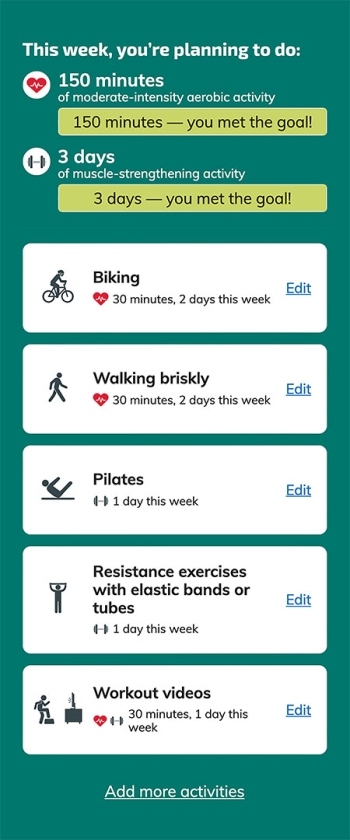
Muscle is more than just for movement.
“One of the biggest things that is lost on people is that muscle is metabolically active,” says Peterson.
“Muscle is the largest organ in the body,” Hunter points out. And it stores and consumes more glucose, or blood sugar, than any other tissue. “It’s essentially a giant sink for glucose.”
“Landmark clinical trials in patients with type 2 diabetes have shown that strength training, even without aerobic exercise, can improve blood sugar,” says Peterson.
For example, researchers randomly assigned 251 Canadian adults with type 2 diabetes to do aerobic training, strength training, both, or nothing for 22 weeks. Strength training, by itself, lowered hemoglobin A1c—a long-term measure of blood sugar—compared to those who did neither. So did aerobic exercise.
But those who did both strength and aerobic training fared the best. Their drop in hemoglobin A1c was twice as great as those who did only one. (That may be because they were twice as active.)
And in a study of 88 people with overweight and obesity (but not diabetes), insulin sensitivity—the ability of the body’s insulin to move sugar out of the blood and into the cells—improved in those who did three days of strength training and walked 12 miles a week at a brisk pace for eight months.
6. Pumping iron may help you live longer.
“We wanted to know if weightlifting alone—or in combination with aerobic exercise—influences one’s risk of early death,” says Jess Gorzelitz, assistant professor of health and human physiology at the University of Iowa.
“So we asked a group of roughly 100,000 older adults about their lifestyle, and then we followed them for about 10 years.”
Those who hit the U.S. Physical Activity Guidelines for aerobic activity—150 minutes of moderate or 75 minutes of vigorous activity a week—were nearly a third less likely to die over those 10 years. That’s no surprise, since aerobic activity improves cardiovascular fitness and is linked to a lower risk of several cancers.
“But we also found that weightlifting, independent of aerobic activity, was linked to a 10 to 20 percent lower risk of dying,” says Gorzelitz.
Want the most bang for your buck? Get your heart and your muscles pumping.
“Those who weightlifted one to two times per week and met the guidelines for aerobic activity had a 41 percent lower risk of dying over a decade,” says Gorzelitz.
Not interested in pumping iron? That’s not your only option.
In a recent study that followed roughly 416,000 people for up to 18 years, those who did muscle strengthening had an 11 percent lower risk of dying.
Some of them used weights, but others stressed their muscles with resistance bands or even their own bodyweight (like with pushups, lunges, or squats).
Why might strengthening your muscles keep you alive longer?
“We don’t know for sure,” says Gorzelitz. “Presumably, our participants were working hard enough to build lean muscle mass and strength. And that helps maintain function and independence and lowers the risk of debilitating falls.”
Socializing may have also helped.
“Most people who weightlift are probably going to a gym,” says Gorzelitz. “Maybe that reduced their isolation, which is linked to an increased risk of mortality.”
A recent study on nearly 1,300 people by the University of Michigan’s Mark Peterson may also shed some light.
“We looked at grip strength, which is a proxy for total body strength,” he says. “Older folks with higher grip strength had a younger biological age—based on a marker in their DNA—than their chronological age.”
“And a weak 70-year-old’s biological age looked more like an 80-year-old’s,” he adds.
“People have said for a long time that exercise makes you younger without anything to back that up. We’re showing for the first time some biological mechanisms that may explain why. But this is the first study, so we have a lot more to learn.”
Gorzelitz’s and Peterson’s studies can’t prove that being stronger helps lengthen your life or makes you biologically younger. Illness or something else about inactive people could explain their shorter lifespan. Even so, there’s no downside to toning your muscles.
7. The world is your strength-training oyster.
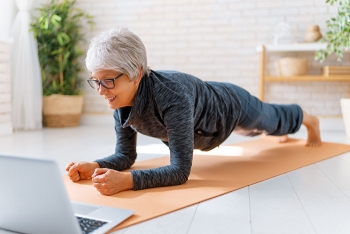
Not sure where to start on your muscle-building journey?
If you’re unfamiliar with correct technique, your best bet is to “work with a qualified personal trainer until you get comfortable,” says Schoenfeld.
“The most important thing at the beginning is doing enough repetitions,” he adds. “It’s a matter of getting the movement patterns ingrained in your subconscious, and that requires repetition.”
To prevent injury, start with lighter weights. “Pick a weight where you can do at least 10—but not more than 15—repetitions,” says Schoenfeld. “And then do two or three sets of 10 to 15 reps.”
Once you’ve gotten the hang of it, push yourself by bumping up the weight to get stronger.
The Physical Activity Guidelines recommend that adults train all the major muscle groups at least twice a week.
“It can be challenging to hit all the muscle groups in one session,” Schoenfeld points out. So you may need to do some muscle strengthening three or four days a week.
But don’t let that dissuade you from starting. “One of our most consistent findings is that while more is better, some is better than none,” says Gorzelitz. “The worst group to be in is the one that does no activity.”
“If time is an issue,” says Schoenfeld, “you can see very good results with a 30-minute session of strength training twice a week.”
Or you can try small bouts—strength snacks, if you will—throughout the day.
“That hasn’t been researched,” Schoenfeld admits, “but assuming you’re putting in as much effort as you would if you did it all at once, I can think of no reason why that wouldn’t work.”
More good news: Whether you like to do fewer reps with heavier weights or more reps with lighter weights, you can build muscle mass and strength.
“The results are virtually identical for muscle mass,” says Schoenfeld.
“That’s assuming that in both cases you challenge the muscles, putting in a level of effort that approaches what is called muscle failure.” (That’s when you just can’t lift the weight even one more time.)
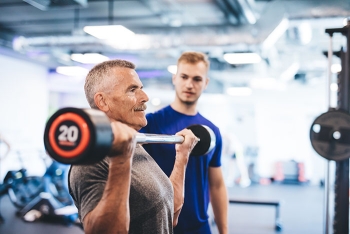
But you’ll build more strength with heavier loads. “You can make good strength gains with lighter loads,” says Schoenfeld “albeit not quite as much as with the heavier loads.”
Got muscle soreness? Don’t worry. “It’s an indicator that you challenged the muscles in a novel fashion,” Schoenfeld explains. “But soreness is certainly not a prerequisite for getting results.”
If your muscles do get sore, don’t give up. Soreness typically subsides after a few weeks of strength training. Still waiting for relief? Try lightening your load or adding more rest days.
And whatever route you take to build muscle, don’t let it get boring. Try Pilates, lift weights, use resistance bands, join a gym, or work out at home using an app or online videos.
Or try a boot camp class or other group fitness class that combines aerobic and strength training moves.
You’ve got options.
More on exercise
What to do if you have osteoarthritis
Preventing Disease

Are you too old to build muscle?
Physical Activity
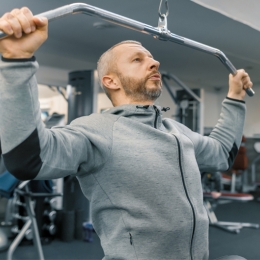
Can exercise help you dodge depression?
Physical Activity
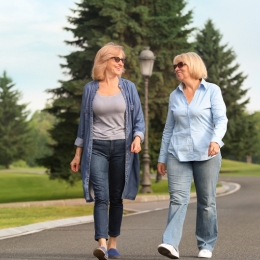
What can taking the stairs do for you?
Physical Activity
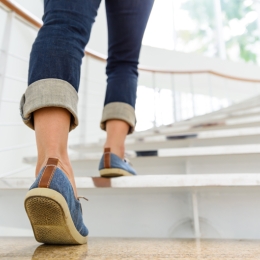
Weekend physical activity may protect your heart
Physical Activity
